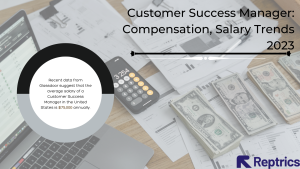Every fiscal year, discussions regarding establishing the annual budget take place. As a CS leader, you must take the brunt of these situations because customer success is still in its formative years. It becomes very challenging for you as a customer success leader to successfully sell budget suggestions for customer success for this precise reason.
Now you carefully examine your performance over the previous year as a leader in customer success. You are prepared to discuss extra customer success budget requirements with the CEO/CFO after identifying new investment areas.
The dreaded part: How can you demonstrate value and win approval for your customer success budget? How can I even inquire about the budget? Well, making a case for customer success is complex. It will be simple, though, provided you perform your research and present quantifiable evidence of the significance of CS.
But, we are here to answer those questions for you. If you are in a customer success leadership role, this blog will really help you.
It is not just about value, it is about understanding how critical it is to get to the right budget number with a pending recession.
Breakdown of this article:
- How to conduct a top-down study for the ratio of customers to CSM
- How to conduct a bottom-up study for the ratio of customers to CSM
- Determining routine journey touchpoints
- Calculating the touchpoints of a single journey
- How to create a headcount budget for customer success
- How to get the budget approved
You will have the budgeting techniques and models necessary to engage your finance team & value to show the CFO in more fruitful discussions on headcount after reading this article; no pleading is necessary.
First things first,
Overview of Customer Success Budgeting
As a leader, you need a Customer Success Budget to assist you in getting the resources and support to carry out your plan. Simply said, a budget is a spending plan based on the revenue and expenses of the business. Budgets are a tool that companies use to estimate income vs. expenditure, comprehend the technical and human resources needed, and determine key metrics like client acquisition costs, CLTV, and NRR. Understanding how to build and use a budget to your benefit is important if you want to operate a responsible business.
Budgeting for CS enablement, systems, and processes to scale is sometimes a last-minute task or decided by the CFO without much participation from CS leadership. If you talk to customer success leaders who were entrusted with creating the team’s initial budget, you will often hear stories like this one. When there is a pressing need to get something on paper because of a significant impending event, such as raising money, being acquired, going public, or changing leadership, important factors like team development, hiring costs, customer success platforms, integrations, and more are frequently ignored. In summary, a CS budget can be made haphazardly, which is incorrect.
You cannot afford to bypass the budgeting and forecasting process as a CS leader. Due to a lack of authority to control a CS budget, planning for the resources your department will need to succeed is a chance that is frequently lost. This lack of ownership creates conflict between Customer Success, Operations, and Finance as well as resentment between Sales and Customer Success. Why do Sales have a monthly budget for drinks and off-sites as well as an annual Gold Club event, but CS frequently receives nothing at all?
It’s time for leaders to start asking for ownership over a budget and demonstrating projected results that will boost team productivity, improve customer satisfaction, and increase revenue. Proactively starting the dialogue with your supervisor or the CFO early and sharing a projected budget to inform these crucial stakeholders of what your department needs and why is a wonderful way to take control.
Additional Resource- Guide on how to select the right CS Platform
But we have to first get to the proposed budget.
Building a Solid Customer Success Budget
Customers to CSM Ratio
Data required:
- Segments of the Customers
- Segmented Revenue
- Customers by category, number
- Map of customer touchpoints and journey (also referred to as a playbook)
- Defining touchpoints
- Time spent on each consumer touchpoint.
We’ll utilize one of today’s most popular Customer Success benchmarks—hiring a CSM for every $1 million in ARR—to demonstrate how to carry out a top-down analysis.
Budgeting in terms of revenue per CSM, however, might be problematic. We suggest examining the CSM workload as an alternative. The number of customers per CSM is the most accurate representation of the CSM workload for the majority of businesses.
Let’s assume that you decide to use the benchmark of $2 million per CSM. The segment’s overall revenue, $10 million, would then be divided by the revenue per CSM ($2 million). You now have the necessary headcount of five CSMs.
Next, divide your needed CSM count by the entire number of consumers in your selected segment (in this example, 450) and divide it by the CSM Count (5). You now have 90 customers per CSM.
Now there is no specific right number. This is just an example. It really depends on your organization but you need to set an overload benchmark so that you know you need to expand your team.
Let’s examine how to determine clients per CSM using a different standard: CSMs ought to be 10% of revenue.
You make $10 million in total sales in this case. Your CSM budget is $1 million as a result. Let’s imagine that, on average, a CSM costs $120,000 to hire (including salary, variable costs, benefits, etc.). As a result, you can get 8 CSMs. We’ll compare using the same number of client segments used in the prior example. 450 is your total client count; divide that by the number of CSMs you have (8). Your customer-to-CSM ratio will now be 56 customers per CSM.
Now, these numbers are just for you to set the tone with the finance team or CFO. You need the numbers to back you and you also need to understand the exact need. This helps us understand it.
What comes afterward gets a clearer picture of the budget and that is bottom-up analysis.
Bottom-up CSM to Customer Ratio Analysis
For your bottom-up analysis, your customer journey will serve as the starting point. You must have considered the events and activities that make up your customer journey before you can start your analysis.
It’s crucial to understand that you can’t just give your CSMs the responsibility of keeping customers happy when you budget for personnel. You must be exact in your calculations of their workload. You must be aware of how long it takes your CSMs to complete particular jobs and activities. This does not imply that you must direct them in every aspect of their behavior. However, it does imply that you must be aware of your main customer touchpoints.
This understanding is important for you to get into the tough parts of budgeting correctly. That is why CS leaders use tools like Reptrics to understand each aspect of the CSM’s job and their proficiency.
If you haven’t already mapped out your customers’ journey, start out simply by making a list of your team’s daily operations. Over time, you can become more complex.
There are primarily two categories of consumer touchpoints. We’ll start by talking about a regular touchpoint with a recurrent cadence. A quarterly business review is an illustration of a regular touchpoint.
After determining your regular touchpoints, you should categorize them according to how frequently and how long they occur for each consumer each month. Let’s imagine that, on average, the preparation, delivery, and follow-up of the quarterly business review take three hours. That process requires a total of 12 hours per customer annually, or one hour every month. You know how long it takes to deliver your individual journey when you calculate the amount of work allotted for each task. Calculating your regular touchpoints is typically a simple procedure.
But when you factor in the touchpoints that happen just once during your journey, like onboarding and implementation, the calculation gets a little trickier.
Divide the time it takes to deliver each one-time touchpoint and add them together. Then you can divide that by your customer base and that’s how you get the number for all the one-time touchpoints.
Let’s assume some numbers:
| Monthly customer hours for routine tasks (A) | 3 |
| Hours per customer per month for one-time activities (B) | 1 |
| Monthly hours per customer inbound (C) | 0.3 |
| Total number of hours per client every month (A+B+C) = (D) | 4.3 |
| Total hours available for a CSM per month (E) | 130 |
| Number of Customers = (E/D) | 30 |
Make sure you take into account the time for internal tasks, meetings, and emails. As a rule, you can take two-thirds of a CSM’s time and assign it to customer-related activities and the rest to organization-related tasks.
Returning to the bottom-up approach, 30 clients per CSM is the result of adding together the figures. To enable a comparison of results, identical figures were utilized for both the top-down and bottom-up calculations.
We had arrived at an average of 90 clients per CSM using the top-down approach from before, with $2 million in revenue per CSM. But here the journey you developed indicates that a CSM can manage only 30 customers, and the top-down analysis indicates that they can manage 90. When you reach this stage of contradiction you’re prepared to discuss trade-offs with your CFO.
This is where the kicker is, technically you can do it but you will be losing on a robust journey which makes the customer success less proactive and more reactive. It is essential to show now why this idea doesn’t work and why scaling even during tough times is better.
Now both the resultant numbers (30 and 90 customers per CSM) shouldn’t match, they should be close and one should never be 3x of another. That is when you buck up and have a chat with the CFO about new hires or new tech.
How to create a headcount budget for customer success
You’ll need the following information to generate your Customer Success budget:
- Client to CSM ratio
- Segment
- Sales strategy
- Monthly new client count; or
- Monthly revenue and deal size data
- Plan to churn
- Monthly expected churn
- Uptimes and Downtimes of customer base
- Full-time staff salary
- Salaries
- Benefits costs
- Timeline for onboarding
- CSM ramp-up time (for new customer onboarding)
These figures should be used to calculate the monthly number of new clients. Because, once more, you’re starting from the notion that CSM effort is most closely related to customer count rather than income.
Once you have the information you need, creating your budget is just a math problem. The good news is that you have already completed the most difficult step, which was figuring out your ratios.
You should work out the following calculation for every month to begin creating your budget:
Current customer count + anticipated new customers from sales – anticipated customer churn = new customer count for the subsequent month.
For the duration of the year, repeat this computation every month.
The number of CSMs you currently have should be compared to the statistics on your anticipated capacity. How many CSMs are necessary? What does that mean for the hiring requirements you have?
Following that, you must add your CSM ramp-up time to your hiring date. When your sales staff is closing transactions, you want your new CSMs to be ready and prepared to take on customers.
The benefit of this model is you can manage it easily according to how sales projections and churn fluctuates. Afterward, you can adjust your hiring based on your budget and real sales.
There you have it, then. With the help of these budgeting models, you may request the necessary headcount with certainty knowing that you have the data to support your request.
You can find more insights into a churn with our blog: Churn Analysis
How to get buy-in from C-Suite
Whatever techniques you choose, they ultimately come down to the same thing: understand what your C-suite wants and demonstrate your ability to deliver it. Put your salesman hat on and offer executable steps that are directly related to ROI to make the things you desire into something customers will want. Get them to understand that you are all standing on the same side.
This brings us to what might be your familiar first point. Align your efforts with those of the business. Show how the investments you wish to make will help the business achieve its objectives
By finding a champion for your projects, you can strengthen your argument. You may create accountability and give your executives peace of mind by demonstrating that someone will accept responsibility for an investment, like a new piece of software. Making cross-functional dependencies you can rely on while developing a sound CS strategy is one of the major challenges. Before presenting your budget to the higher-ups, do the groundwork to gain support from your colleagues. You’ll be able to dispel any reservations your executives may have when you arrive with evidence that someone will be in charge of the project and everyone is on board.
Last but not least, avoid attempting to impress your superiors with impossibly high outcomes. Nothing quite compares to asserting that a new tool will reduce your churn rate by 45%. Then you work yourself to death all year to get a result that is significantly below your estimate. Imagine their response when you tell them another new tool will produce excellent results for them the next year. They won’t believe you, warning: Offer a reasonable ROI and a clear plan of action rather than going all out. You won’t be worried when it’s time to keep your commitments, and you’ll also receive what you desire.
Takeaways
The CS department is the only corporate function that expands almost as quickly as the top line. It’s possible that your CFO won’t fully comprehend this.
- You must be able to quantify the value that a customer adds to the business in order to get the customer success budget approved. It is simple to link the business objectives with the CS measurements. This enables you to show the true value. Before requesting a larger budget, you must first present the quantitative data.
- With a larger budget, you should be ready to demonstrate how you intend to grow your income. Key hires, certain programs, etc., are only a few examples.
- Be ready to answer some challenging CFO questions. Make your case using data.
- Make CS look like a profit center rather than a cost center.
- Your CFO is worried about cutting expenses to increase sales. Therefore, demonstrate to him/her how higher CS investment generates revenue.
- Show how spending money on CS technology will increase revenue.
Usually, the topic of cutting costs in the CS department comes up first. It is up to you, as the CS leader, to change the subject and highlight the necessity of more investment. Learn how our Customer Success professionals can help you. Visit Reptrics.









